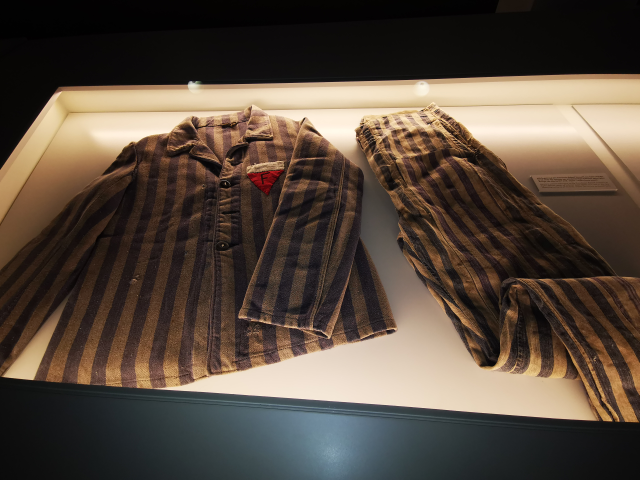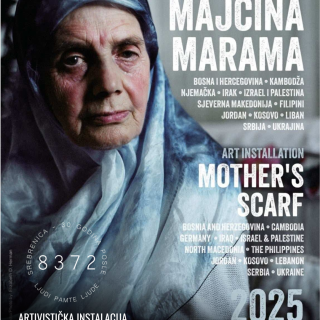My participation at the study visit to Buchenwald Memorial Center as a part of the project „Learning lessons from a violent past for a peaceful future” was exceptional experience for me, both, as an individual and as educational expert with significant experience in this field.
What is the role and the responsibility of education when dealing with the difficult past of wars and mass violence in Bosnia-Herzegovina, France and Germany? And what we can learn from history to respond to current socio-political challenges in European societies, as for example, nationalism, xenophobia or populism? These were the core questions this international seminar cycle tackled in a very successful way. It was organized by four institutions from three different countries which all, in their own way, work in an educational perspective on violent periods of their respective countries, Memorial Camp des Milles from France, Buchenwald Memorial from Germany, Forum ZFD and the History Museum of Bosnia and Herzegovina.
Germans reached far concerning educational tools and concepts that tackle these important subjects. They didn’t only bring policies that are supportive to the educational strategies and tools but they managed to do a lot in sense of raising awareness of ordinary people, people that are not coming from the world of science, education or other institutions that are in charge of this important challenge.
Of course, when we “uncovered” this topic it came out that it wasn’t always easy thing to reach. It is a process that lasted for a long period, especially when it comes to policy making level. It wasn’t easy to make something very sensitive as responsibility of Germans during World War II an official narrative that will become part of curriculum and will be a part of learning strategies.
But they managed and they are aware that there is still a significant part of a road to walk through.
During six days seminar we were using various strategies to learn about history and memories of the national socialist persecution in Germany, history-(ies) and memorialization in the Buchenwald Memorial, we were guided through the Buchenwald Memorial site, meeting Buchenwald as a place of remembrance and a place of education, Buchenwald and its different histories – the concentration camp, the soviet internment camp and the period as a Memorial in GDR-times and after 1990.
To meet our agenda – learning from the past for today, we were going through concepts of historical-political education and methodical tools in Memorials – Concept of education and pedagogical methods in the Buchenwald Memorial – Presentation of Education activities in the other Memorials (Bergen-Belsen Memorial, ‚House of the Wannsee-Konferenz‘, Memorial ‚Bunker Valentin‘, etc.). The participants pointed out their concepts and gave examples of methods which they use to link past and present.
Third day of our visit to Germany was devoted to visiting Erfurt and Documentation Center ‚Topf und Söhne ‘(‚Topf und Söhne ‘was the company which constructed crematorium ovens), meeting their exhibition, educational activities and history, as well as Documentation Center ‚Andreasstrasse‘.
Apart from all exhibition and educational activities inside the memorial institutions, my attention was occupied by messages, photos and picture about holocaust and responsibility of Germans basically on every step.
I was thinking on the process itself and that it must not be easy to reach this level of acceptance and awareness through public policies and decisions on that by the official decision-making institutions. I was truly impressed by the level of culture of remembrance of German society and realized that it is a true indicator of steps forward towards the future.
The next day we were visiting Weimar as a place for learning from the past. We were exposed to various activities that were tackling a question how can Weimar deal with its history today, the different layers of history (classical Weimar, the modern period (Bauhaus), the national socialist period and GDR times), presented by N.N. Klassik Foundation Weimar. It was truly impressive to see photos of inmates of Concentration Camps posted as monuments and places of remembrance basically everywhere and with very powerful messages on the responsibility again.
I must admit that each of those moments I witnessed how far they, Germans, reached in recognizing necessity of identifying its own responsibility for acts that their society absorbed in former days I felt that we, BiH society are miles far away from such level of recognition. It made me discouraged in the moment but on the other side, it made me more decisive as educator to research on models and strategies that are acceptable for our society to adopt and to accept responsibility about past events and facts that follow as necessary moment for future.
I would like to point out one particular detail that the Germans have focused in their curriculum, the issue of ‘bystanders’ during the atrocities that took place in their country during the war and the issue of their responsibility. I consider this a very educational concept of teaching the past for the future.
Exchange about the presented/discussed concepts and methods of historical and political education that we had in this study visit was a very useful ground for tackling and initiating peace education themes in our curriculum. Comparison of differences and similarities in the education activities in BiH, France and Germany were very inspirational for my future horizons in professional development. There is a long way to go, but it must start from a first step and everyone, especially the educators must be aware of necessity of it.
Focus of the final day activities and a key question was what concepts and methods can we use for our future historical and political education work on the national and international level? The worst of all strategies would be – leaving it aside, as not important and do nothing about it. Working on the challenge of learning lessons from a violent past for a peaceful future must be our official agenda and a part of a curriculum. It is up to educational experts to find a way on how to meet with basic joint content in order to empower a future generation to have critical thinking and problem-solving skills and to be able to cherish their own culture, language, symbols, without imposing it to others.
Enabling youth in our country to become citizens of the world who are able to live everywhere and with all cultures and ethnic groups must be a competence that they develop from early age.
As a society, we have to step out of the hostage position in which we are often misused for daily political and other purposes by those who do not recognize the issue of responsibility for future generations.
BiH society is still one of the most troublesome in Europe, precisely because of the inability to find answers to these questions and challenges – how to teach the past and on its foundations, build the economic, educational, cultural and other potentials of this area.
It is understandable that in the complex past and the layered culture abounding in BiH society, it is especially difficult to find an appropriate way that would satisfy all aspects (both scientific, historical-factual, emotional because of the extremely difficult past) and all the parties concerned with these issues. But the fact is that events of the past must not be a stumbling stone to all our future chances of development. Our students carry the potential and prosperity, they must be given the chance to live uninterrupted, to be mobile in the world of education and to bring the knowledge and skills they acquire to their country of origin and try to make it a better place to live.
Olivera Nedić
Teacher/Educational expert
Doboj, Bosnia and Herzegovina
Photo (Buchenwald Memorial): Uniformed matriculated clothes with triangle all detainees of the concentration camp of Buchenwald had to wear permanently. The red colored triangle with "F" inside stands for "French political prisoner". All political prisoners were marked with the red color triangles.




